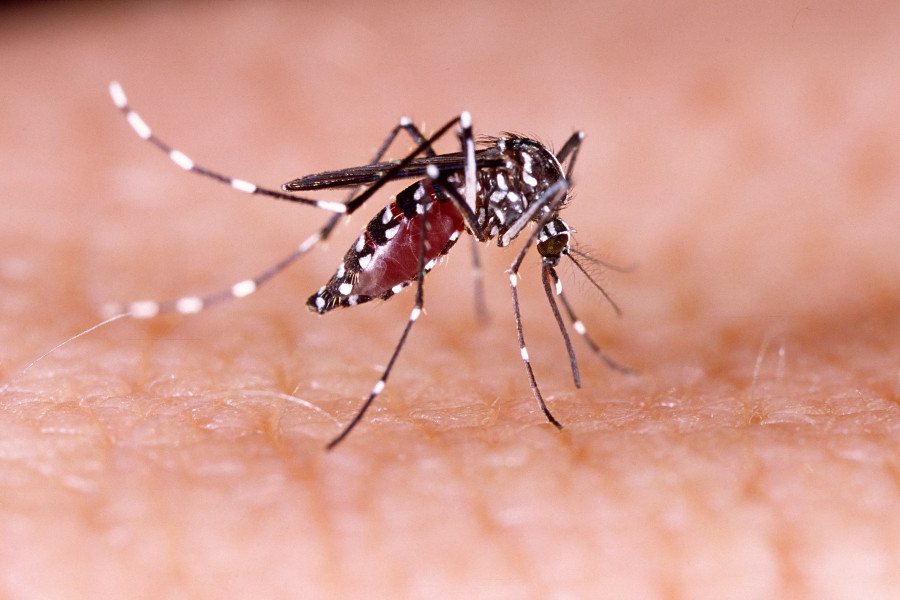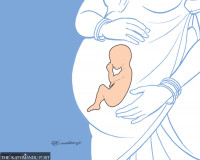Health
Kala-azar and dengue reported in Okhaldhunga, Kalikot and Myagdi
Entomologists say with the resumption of long-haul public transportation and rise in mobility, the risk of vector-borne diseases outbreak has increased.
Arjun Poudel
At a time when the entire focus of the health authorities is on containing the Covid-19 pandemic, cases of kala-azar, dengue and scrub typhus have been reported in at least three districts.
The Epidemiology and Disease Control Division said that infection of kala-azar and dengue have been found in Kalikot, Okhaldhunga and Myagdi districts, which would not report these diseases in the past.
“We have alerted the health workers at the local level and districts about the risk of a large-scale outbreak of kala-azar and dengue,” said Lila Bikram Thapa, a senior public health administrator at the division. “What is alarming is these diseases have been reported from mountain districts, which were considered non-endemic to the diseases.”
Kala-azar, also known as visceral leishmaniasis or black fever, is transmitted through the bite of infected female phlebotomine sandfly.
Detection of kala-azar cases in areas above 650 metres where it was thought impossible for female phlebotomine sand flies to survive is a cause for serious concern, health officials say.
“We were taught that phlebotomine sandflies do not survive above the altitude of 650 metres, but now cases of infection are being reported in altitudes over 1,400 metres,” said Thapa.
Weight loss, weakness, cough and fever that lasts from a few weeks to months are common symptoms of kala-azar.
Dengue is a mosquito-borne disease, which is transmitted by female Aedes aegypti and Aedes albopictus mosquitoes. The same vector also transmits chikungunya, yellow fever and Zika virus disease.
In 2019, at least six people died and over 16,000 people were hospitalised due to dengue outbreaks in 68 districts in Nepal.
Dengue sufferers with mild symptoms do not visit the hospital and 70 to 90 percent of the cases are asymptomatic, suggesting that the incidence rate could be much higher, health officials say.
Thapa refused to reveal the exact number of cases detected in the said districts but said that several cases have been reported.
“We have asked the health agencies concerned to make the surveillance system active, mobilize female community health volunteers and supply medicines to the health facilities,” said Thapa. “Health workers have been asked to study the symptoms of patients of these diseases.”
Entomologists say that detection of dengue and kala-azar in the district in the midst of the pandemic increased risk of massive outbreak, as health workers, who have been continuously serving for a long time have been exhausted. Moreover, symptoms of many vector-borne diseases including kala-azar and dengue overlap with symptoms of Covid-19 infections.
“As the authorities have allowed resumption of public transportation, which increases mobility, chances of spreading the diseases not only the coronavirus but also other vector-borne diseases will increase,” said Sishir Panta, an entomologist, told the Post.
“Vectors of dengue and kala-azar and others have been present throughout the country. What is needed is the source of infection and if infected people travel, the risk of spreading the infection increases.”
The Health Ministry said that cases of kala-azar have been reported from 60 districts and dengue from 68 districts. The ministry has decided to eliminate kala-azar by 2030 and for that cases of infection should be reduced to 1 per 10,000 population. Officials said that the existing case detection rate of kala-azar is over 1 per 10,000 people.
Doctors say that possible outbreaks of vector-borne diseases could create panic among the general public and increase the chances of late detection and severity.
“If someone suffers from fever, people think that he/she might have suffered from the coronavirus,” Dr Sher Bahadur Pun, chief of Clinical Research Unit at Sukraraj Tropical and Infectious Disease Hospital, told the Post. “Health workers may not perform additional tests if patients tested negative for Covid-19, and without proper diagnosis, people may return home, which only increases severity in the patients.”
As most of the symptoms of the vector-borne disease—fever, body ache, sore throat and match with coronavirus infection, there are also chances of misdiagnosis, doctors say.
“Surveillance of the vector-borne diseases should be stepped up and health workers should be encouraged to perform another testing if patients tested negative to coronavirus,” Pun said.




 5.62°C Kathmandu
5.62°C Kathmandu














